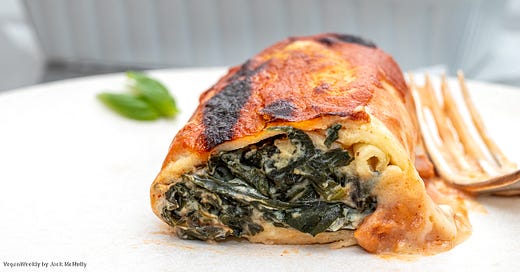The Elegant Simplicity of Crespelle
Includes recipes for Crespelle, Crespelle alla Fiorentina, and Vegan Béchamel Sauce
The aroma of possibility filled the air in Costigliole d'Asti, a small village situated approximately halfway between Asti and Alba in northern Italy's Piedmont region. Perched on a hillside and domi…



